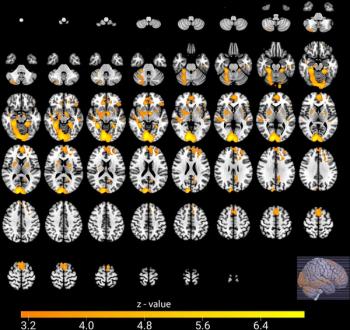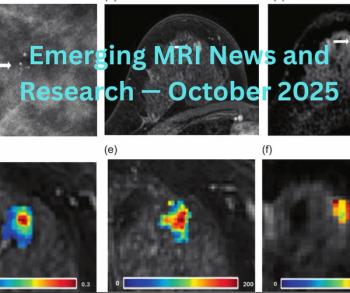
Brain MRI Shows Visual System Changes in Parkinson’s Disease
MRI may help physicians monitor Parkinson’s disease progression.
MRI can detect intracranial visual system changes in patients newly diagnosed with Parkinson’s disease, according to a study published in
Researchers from Italy and the United States performed a prospective study to determine if there were intracranial visual system changes among newly diagnosed Parkinson disease in drug-naïve patients.
"Although Parkinson's disease is primarily considered a motor disorder, several studies have shown non-motor symptoms are common across all stages of the disease,” Alessandro Arrigo, MD, an ophthalmology resident at the University Vita-Salute San Raffaele of Milan, Italy, said in a release. "However, these symptoms are often undiagnosed because patients are unaware of the link to the disease and, as a result, they may be under-treated."
Forty patients participated in the study; 20 with Parkinson’s disease (11 men and nine women) and 20 age-matched control subjects. All underwent T1-weighted and diffusion-weighted imaging within four weeks of their diagnosis.
The researchers found that the patients with Parkinson’s disease had significant alterations in optic radiation connectivity distribution, with decreased lateral geniculate nucleus V2 density, a significant increase in optic radiation mean diffusivity, and a significant reduction in white matter concentration. Voxel-based morphometry (VBM) analysis also showed a significant reduction in visual cortical volumes, and the chiasmatic area and volume were significantly reduced.
"The study in depth of visual symptoms may provide sensitive markers of Parkinson's disease," Arrigo said in the release. "Visual processing metrics may prove helpful in differentiating Parkinsonism disorders, following disease progression, and monitoring patient response to drug treatment."[[{"type":"media","view_mode":"media_crop","fid":"62014","attributes":{"alt":"","class":"media-image media-image-right","id":"media_crop_8389615712090","media_crop_h":"0","media_crop_image_style":"-1","media_crop_instance":"7849","media_crop_rotate":"0","media_crop_scale_h":"0","media_crop_scale_w":"0","media_crop_w":"0","media_crop_x":"0","media_crop_y":"0","style":"height: 530px; width: 425px; float: right;","title":"Left and right OR image in a representative subject overlaid onto a T1-weighted axial volume image of the same subject. OR images were obtained on the basis of diffusion-weighted volume images by means of constrained spherical deconvolution fitting and related tractography. Each bundle was automatically colored according to tract main directionality: red for left to right, green for anterior to posterior, and blue for inferior to superior. Image courtesy of Radiology. ©RSNA, 2017.","typeof":"foaf:Image"}}]]
Newsletter
Stay at the forefront of radiology with the Diagnostic Imaging newsletter, delivering the latest news, clinical insights, and imaging advancements for today’s radiologists.



























